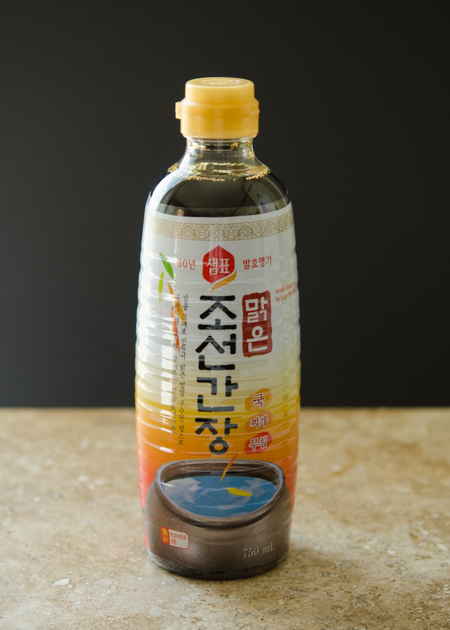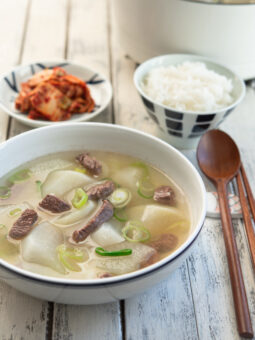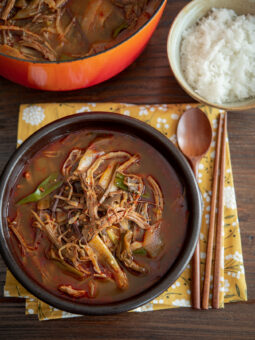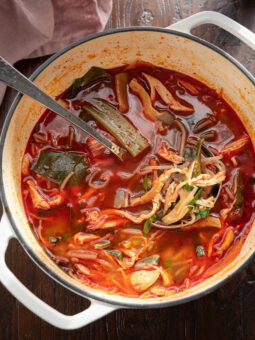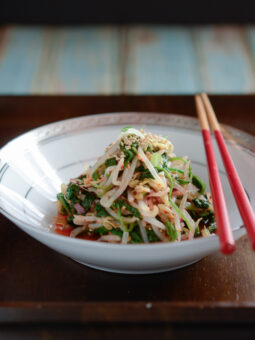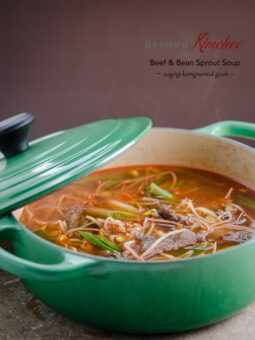Korean Soup Soy Sauce (gukganjang)
This traditional Korean soy sauce is known as guk-ganjang (국간장) or Chosun ganjang (조선간장).
Guk-ganjang literally means soup soy sauce , and chosun-ganjang means soy sauce used in Chosun dynasty era. Chosun was the name of Korean kingdom before the republic of Korean was established. During the Japanese colonization, people named Korean traditional soy sauce as Chosun ganjang to differentiate from the Japanese soy sauce (whe-ganjang, 왜간장)
Koreans have been using this tasty sauce for nearly 2000 years, and it’s unique condiment to Korea. Still many Korean homek-cook make this traditional Korean soy sauce at home by authentic method. Factory made soup soy sauce is widely available in many Korean markets.
Along with doenjang (fermented soybean paste) and gochujang (fermented chili paste), this guk-ganjang (soup soy sauce) is a fundamental condiment of Korean cuisine.
Guk-ganjang is intended specifically to season Korean soups and stews. The color of Korean soup soy sauce is lighter than common soy sauce and almost translucent which makes it ideal for soups because it doesn’t discolor the soup broth.
How Korean soup soy sauce is made
Korean soup soy sauce comes from the naturally brewed by the mixture of salt, water and fermented block of soybeans called meju (메주), which is a base for making Korean soybean paste (doenjang). Therefore guk-ganjang is a by-product of Korean soybean paste (doenjang).
The traditional method of making Korean soup soy sauce happens in an earthenware called Onggi (옹기) or hangari (항아리). After a long time of fermentation, the brewing process results salty, pungent liquid that becomes guk-ganjang, while the leftover meju pieces are mashed to become doenjang.
Since the sauce is a by-product of fermented soybean block without any added supplements like wheat, it’s packed with natural umami. Often, soup soy sauce is added to vegetable and meat dishes to add the depth in the flavor.

